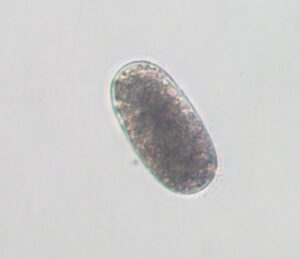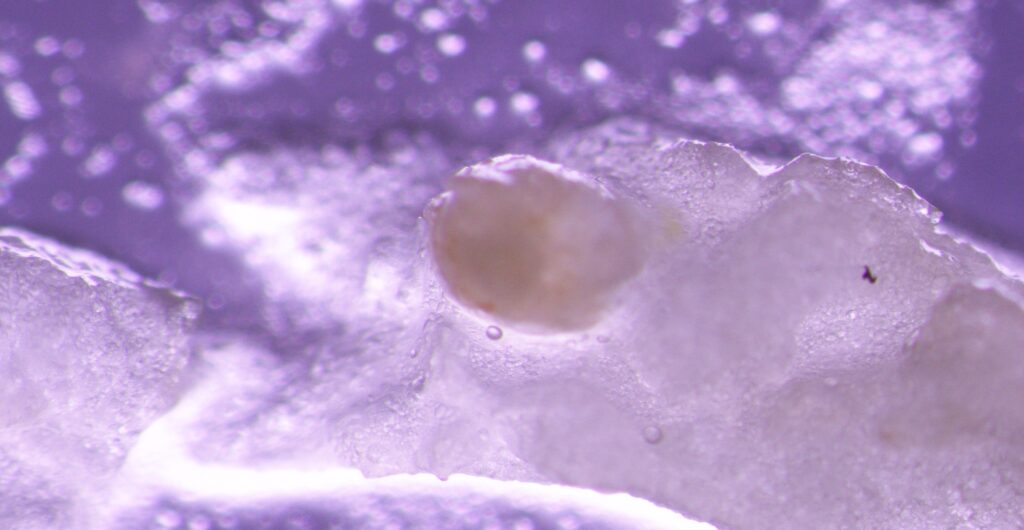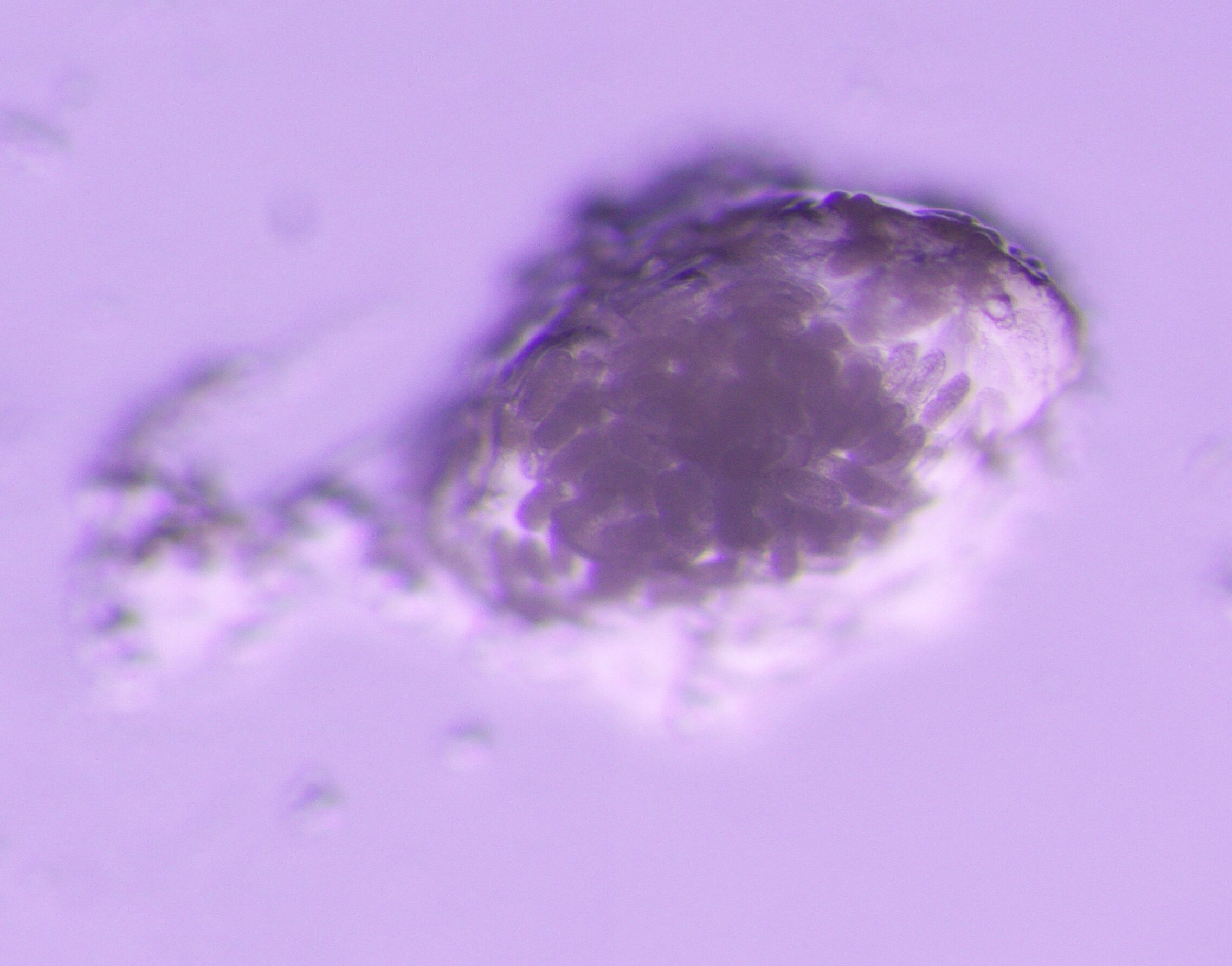Root-Knot Nematode Biology
Learn more about the many aspects of root-knot nematode biology below!
Root-Knot Nematode Life Cycle & Infection

Credit: Sam Mowery
Root-knot nematode life cycles vary greatly in length. Highly dependent on the temperature of their environment, the specific nematode species, and the specific host plant, some root-knot nematodes can have life cycles as short as two weeks (Mitkowski and Abawi, 2003).
The root-knot nematode life cycle begins with an egg. Root-knot nematode eggs are characterized by a transparent “shell” and oblong shape. The juvenile nematode begins as a large, dark mass of cells within the shell.
As time passes, the cells begin to differentiate and cluster, leading to many small clusters and eventually the first life stage of the juvenile nematode (J1) develops within the egg. The J1 life stage is easily visible within the egg, where the J1 is vermiform in shape (worm-life) and often curled due to their confinement with the egg. While in the egg, the J1 nematode molts into the J2 life stage. The J2 life stage is similarly vermiform in shape and is usually no longer than 500 μm. After developing into the J2 life stage, the nematode emerges from the egg.

Credit: Sam Mowery
The J2 life stage is the primary free-living life stage and the only infective stage of the root-knot nematode life cycle. When free-living, root-knot nematodes live in the soil and move towards plant roots, which serve as their feeding sites. When arriving at a plant root, root-knot female nematodes utilize their stylet, similar to a hypodermic needle, to puncture plant cells and inject esophageal secretory proteins that stimulate the development of “giant cells” (Mitkowski and Abawi, 2003). The “giant cells” and neighboring host root cells, which have also undergone division and enlargement, comprise the galls. The galls are the primary feeding sites and once these sites are established, the female nematodes permanently remain within this site. Within the plant root, female nematodes develop into J3 and J4 life stages, eventually developing into adults.

Credit: Adrienne Gorny

Credit: Adrienne Gorny
Females typically are globose (rounded) with a short “neck” and opaquely white. Many species of root-knot nematodes utilize parthenogenesis for reproduction, meaning that male nematodes are not needed for the completion of the reproductive cycle. With this in mind, female root-knot nematodes often break through the root and deposit eggs within a gelatinous egg mass without the need to reproduce with a male.
Males are similar in form to the J2 life stage, where they are vermiform in shape and are free-living. However, males do not infect host plant roots. Given that most root-knot nematode species are parthenogenic or facultatively parthenogenic, males are often rare or uncommon within the environment. However, there are exceptions to this norm, where environmental stress can lead to increased numbers of male root-knot nematodes.
Root-Knot Nematode Transmission
Root-knot nematodes are transmitted primarily through infected sweetpotato transplants, seed roots, or slips. Root-knot nematodes can similarly be moved through infested soil that is moved through planting material, equipment, or simply the bottom of someone’s shoes. Last, root-knot nematodes are transmitted through irrigation water and flooding.
Learn how to prevent and mitigate root-knot nematode movement.